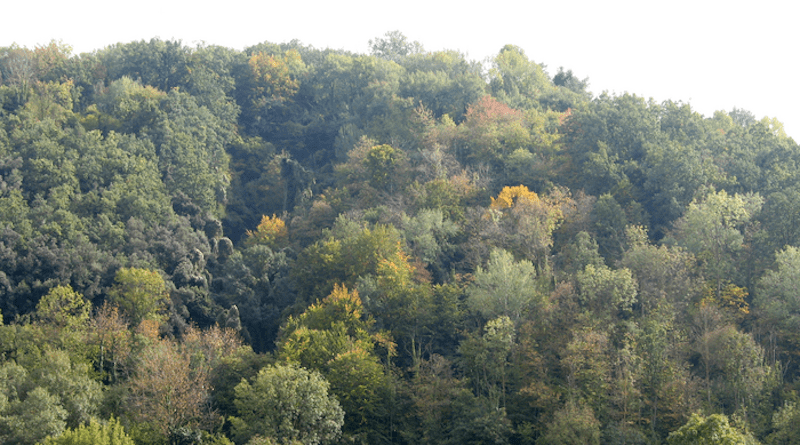Diversity Of Present Tree Species Is Shaped By Climate Change In Last 21,000 Years
A research team led by Aarhus University, Denmark, in collaboration with researchers from more than 50 research institutes around the world, has assessed how past climate changes have affected how the composition of tree species in one area differs from the composition of neighbouring areas on six continents.
What they have studied is called beta diversity, which you can read about in the fact box.
They found that the global pattern of beta diversity in terms of tree species, species characteristics and evolutionary history was closely linked to temperature changes since the peak of the last ice age, which was about 21,000 years ago. Moreover, they show that the effects of historical climate variations on the beta diversity were stronger than the effects of current climatic conditions.
Most of the tree species
It should be added that the researchers have only studied the angiosperm tree species – i.e. species that produce seeds enclosed within a carpel. Angiosperms make up about 80 per cent of all plant species, and some of the most common angiosperm tree species are oak, beech, birch, maple, linden, maple, willow, palm, and eucalyptus.
The researchers combined data from five openly shared databases of tree species and their distributions, with information on the phylogenetic relations between species, and their ecomorphological attributes.
Two different effects on forests
They then divided the effects of ancient climate change on different habitats into two components, each with its own technical term:
- Turnover – i.e. changes due to species replacement. If one species goes extinct in a habitat, another species comes in and fills its ecological role. It turns out that the greater the temperature changes an area has experienced since the Ice Age, the less replacement has occurred in that area.
- Nestedness. In beta diversity, this term describes a pattern in which the composition of species in a diverse habitat is a subset of the species composition in a different and less diverse one – such that the more diverse habitat contains all the species found in the less diverse one, plus additional species. This is an important concept in understanding the organization of biodiversity because it can help identify areas that are more important for conservation. Habitats with nested species compositions may have lower overall biodiversity, but may contain species not found in other habitats, making them essential for preserving overall biodiversity. And the greater the temperature changes an area has experienced, the more nestedness has occurred. Climate fluctuations have thus wiped out local species that have not been replaced.
The authors found that the influence of the two components shifted from the equator to the poles.
In tropical areas, turnover – i.e. species replacement – was the most important factor in determining changes in species composition between localities, due to rapid species change.
In temperate regions, nestedness was the primary mechanism for determining changes in species composition, because the species richness declines as we get closer to the poles.
The purpose of the study, which has just been published in Science Advances, is to supply the ecology science with a tool to solve the major challenge of understanding how ongoing and near-future climate change reshapes the distribution of biodiversity and ecosystem functioning.
“Because the Earth’s climate has changed enormously through geological time, exploring the effects of past climate change on current biodiversity provides an opportunity to understand the risks emerging from ongoing and future human-induced climate change,” explains the study’s first author, Wubing Xu, who initiated the study at Aarhus University and is now a postdoc at the German Center for Integrative Biodiversity Research (iDiv).
The researchers point out that the study also provides a new understanding of the challenges to ecosystem protection and management of efforts to mitigate the impacts of such changes.
Crucial roles
“Trees and tree diversity play crucial roles for terrestrial ecosystems, global biodiversity, and humans. This study confirms and extends our previous findings of the high sensitivity of tree diversity to paleoclimatic changes on a global scale. It also suggests that ongoing climate change has the potential to dramatically influence global biodiversity and ecosystem properties not just via direct effects, but also via its effects on trees as ecosystem engineers,” emphasizes Professor Jens-Christian Svenning, a co-author of the study.
“I hope these findings can aid the development of conservation and management plans that consider the long-term and diverse impacts of climate change on all biodiversity dimensions. Only then is there a realistic chance that we will reach goal A of Kunming-Montreal’s Sustainable Development Goals for 2050,” adds Assistant Professor Alejandro Ordonez from Aarhus University and senior author of the study.
(The mentioned goal A for 2050 includes that human induced extinction of known threatened species is halted, and, by 2050, the extinction rate and risk of all species are reduced tenfold.)

